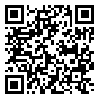Volume 14, Issue 7 (2012)
JAST 2012, 14(7): 1523-1534 |
Back to browse issues page
Download citation:
BibTeX | RIS | EndNote | Medlars | ProCite | Reference Manager | RefWorks
Send citation to:



BibTeX | RIS | EndNote | Medlars | ProCite | Reference Manager | RefWorks
Send citation to:
Emam-djomeh Z, Shamaei S, Moini S. Modeling and Optimization of Ultrasound Assisted Osmotic Dehydration of Cranberry Using Response Surface Methodology. JAST 2012; 14 (7) :1523-1534
URL: http://jast.modares.ac.ir/article-23-11160-en.html
URL: http://jast.modares.ac.ir/article-23-11160-en.html
1- Department of Food Science, Technology and Engineering, Faculty of Agricultural Engineering and Technology, Agricultural Campus, University of Tehran, Karaj, Islamic Republic of Iran.
Abstract: (8541 Views)
In this study, we investigated the effects of osmotic process with or without ultrasound on solid gain (SG) and water loss (WL) of cranberries. Response surface methodology was used to model and determine the optimum processing conditions for WL and SG during osmotic dehydration of samples. Sucrose (40-60%) and salt (0-8%) concentrations, temperature (30-50°C) and frequency of ultrasound (0-130 kHz) were the factors investigated with respect to WL and SG. Experiments were designed according to a second-order Central Composite Design (CCD) in the form of a Face-Centered Cube (FCC) with these four factors, each at three different levels, including central and axial points. All experiments were conducted in triplicate. Experiments were conducted in a shaker with constant 150 rpm agitation and solution to sample mass ratio of 10/1 (w/w). Analysis of variance (ANOVA) was performed to check the adequacy and accuracy of the fitted models. Statistical analysis of results showed that the linear terms of all the process variables had a significant effect on WL. Except for temperature, all other parameters had a significant effect on SG. Optimum operating conditions were found to be sucrose concentration of 50.1%, salt concentration of 8%, temperature of 50°C and ultrasound frequency of 130 kHz.
Keywords: Cranberry, Modeling, Optimization, Osmotic dehydration, response surface methodology, Ultrasound
Subject:
Food Science and Technology
Received: 2010/12/6 | Accepted: 2011/06/29 | Published: 2012/11/21
Received: 2010/12/6 | Accepted: 2011/06/29 | Published: 2012/11/21
| Rights and permissions | |
 |
This work is licensed under a Creative Commons Attribution-NonCommercial 4.0 International License. |







